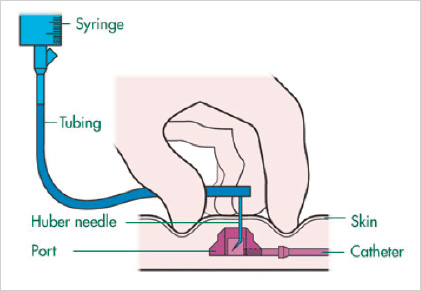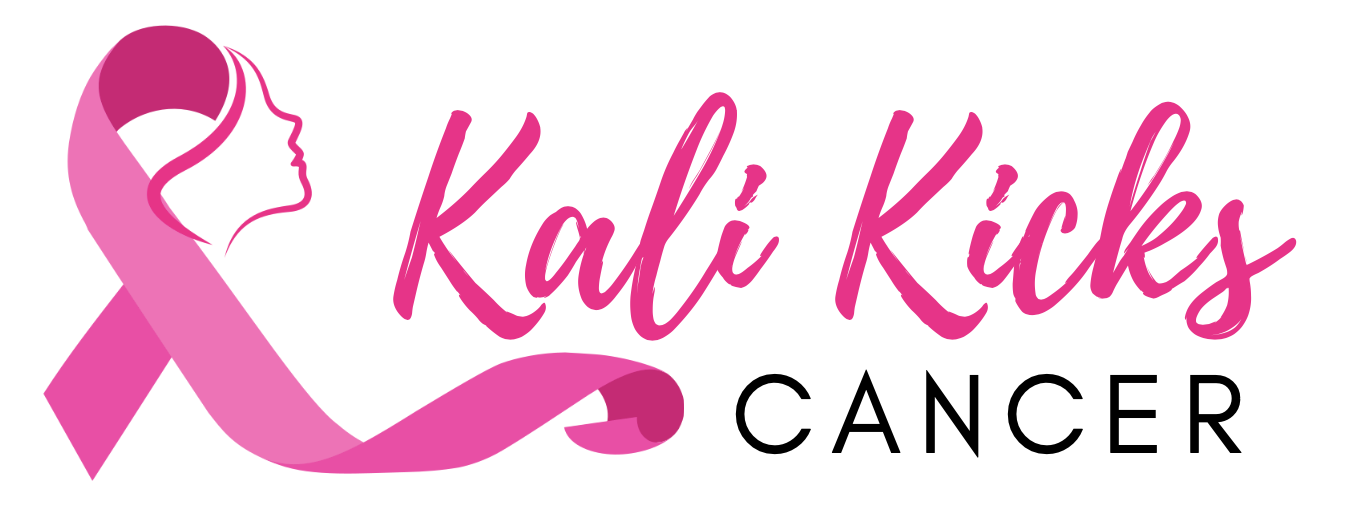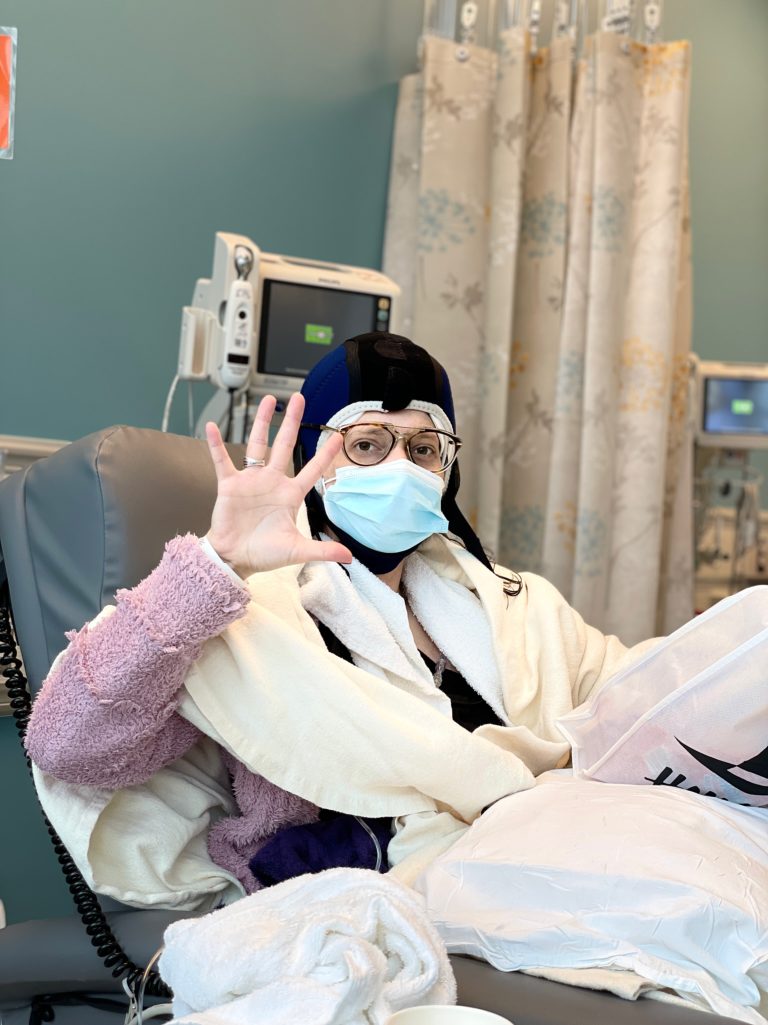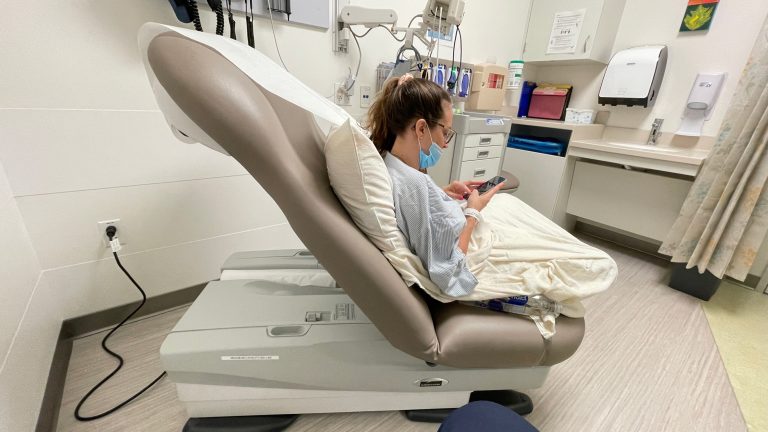Port Catheter
My last post discussed my chemo regimen, the process and actual as well as potential side effects. Since I was diagnosed with triple positive breast cancer, I received TCHP chemotherapy. This particular regimen is a combination of targeted chemo medications and hormone therapies. I had a total of 6 cycles of TCHP every three weeks over a period of about four and a half months.
This blog post will discuss my port catheter placement. The port catheter is commonly called a port, and that will be the term I use. I am beyond thankful for my port and often joke that it has become my best friend.
What is a Port?
The port is a device that includes a flexible catheter (a thin, flexible tube) which connects the port to a large vein above the right side of the heart called the superior vena cava. The type of port I received is called a power port. A power port is a type of port that can withstand higher injection pressures and must be accessed with a special type of needle. Power ports are made to be used specifically for imaging tests as contrast dyes are often injected at higher rates.
My port is a bit visible as a small bump under my collarbone, resting right under my skin. This port is used for my chemotherapy and hormone therapy treatments. It is also used for any contrast images that may be needed, such as a MRI or CT with contrast. After the procedure, the location of the port was a bit sore and bruised which is appropriate. The team gave me a card that I carry all the time with me so in case of an emergency, first responders will know what kind of port I have. This is also helpful if you ever need to travel and go through TSA, as the port will set off the metal detectors. I have included a link to learn more about a port placement from the Cleveland Clinic.
Having a port placed is a personal choice and decision. Not everyone who goes through cancer treatment wants to have one. For me, I knew I wanted one and have not regretted the decision as it has saved me from becoming a pin cushion. If you are someone who is interested in a port for chemo it is worth talking to your oncologist and weighing the options.

Port Placement
Prior to starting chemotherapy I had a minor surgical procedure to insert a Port Catheter, commonly called a Port. This procedure is considered minor surgery as it requires mild sedation with anesthesia and some local anesthesia in the area of the skin. The initial step for the procedure is a skin incision about an inch in length below my left clavicle. The port is about the size of a quarter and has a disc shaped titanium body. It is primarily made of metal with a soft silicone top that serves as the access point.
My port placement was done by the Interventional Radiology team at the Mount Zion Cancer Treatment Center. I had a great pair of nurses named Mike and Michelle, who I happily named the M&M pit crew. Mike was my nurse for the procedure along with 3 interventional radiologists for the actual port placement procedure which only took 30 minutes.
The procedure was done under fluoroscopy to verify appropriate placement. I was able to stay awake for the entire process chatting away with them; I think Mike was surprised the meds didn’t knock me out. The goal of the meds are not to fully knock you out, but you won’t remember much from the procedure. After the procedure you will have to have someone drive you home, in order to make sure you are safe

Pros and Cons of a Port
For any procedure and placement of a device in the body it always comes with risks. As I stated before a port placement is a personal choice, so not everyone has to have one. Here are some of the risks and benefits to having a port placement. The advantages are it is more comfortable to have a port than an IV or PICC or peripherally inserted central catheter line. A PICC line is implanted into a vein in your arm and only used for a short period of time, unlike a port you can have for years. A port is better than an IV for chemo as it reduces the risk of any chemo medication being leaked which can cause damage to the surrounding tissue. With a port you are able to bathe and swim freely without concern of infection as it is completely.
There are some disadvantages with having a port. The primary concern is always the risk of infection, however this risk is very low. Studies shoe itt is estimated to be around 2% of ports placed have to be removed due to infection. Any surgical placement carries a risk, including a risk of bleeding. Another risk is thrombosis, or risk of a blood clot. Many people with a port can develop a blood clot which can block the catheter. The blockage can be cleared with an injection of a blood thinner like Heparin. If this doesn’t work sometimes the port will have to be replaced. Since the port is surgically placed under the skin, some people do not like having a permanent scar, which can often be a reminder of cancer treatment.

Purpose of the Port
The goal of the Port is to protect the surface veins as chemotherapy is very toxic; using an IV to run chemo will cause the veins to collapse and/or scar. The port is accessed by a poke through the center of the implanted port (somewhat like a pin cushion). The medications or chemo will move from the port through the catheter directly to the bloodstream.
I will also be able to have my blood draws from my Port and any other needed IV medications, such as contrast for MRI or CT scans. A port can only be accessed by a Registered Nurse (RN), as they are the only people qualified for this. If I need a simple blood draw and an RN is not available I may have to have a simple poke in the arm.

Why I chose the Port
The Port has been a huge life saver for me. I often joke that it has become my best friend. Prior to starting cancer treatments I had great, easy to spot surface veins that made blood draws simple and fairly painless. After my initial 6 rounds of chemo and hormone infusions, my veins were destroyed even after having a port.
When I had to spend some time in the hospital a while back, my nurse was unable to get an IV started and had to call the Rapid Response team, who often has a nurse with experience in difficult-to-find veins when one needs to be accessed. Often if a hospitalization is needed, the oncology team prefers to have an IV placed instead of accessing the port as it is essential to avoid the risk of infection.

Thank You
Thank you for continuing to follow my journey. I hope that I am able to share important information that can help someone else in their breast cancer journey. Please continue to follow and share my blog or website with anyone who may find it valuable. Thanks again!



